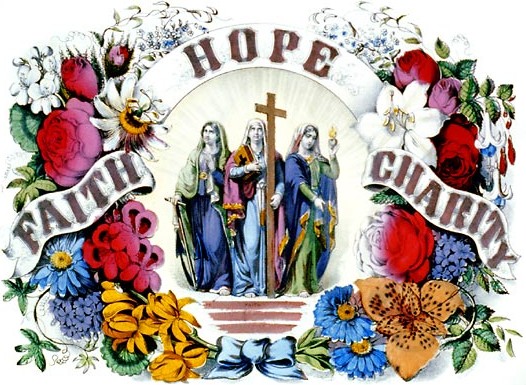Magnificat duplication.

Philippe de Champaigne (1602–1674) was 61 years old when he painted this picture for the Carthusian church in Paris. It is a work of maturity, illuminated by the supernatural shades of blue that were his secret—here on Jesus’ toga, Mary’s palla (mantle), and the view of Jerusalem beyond the openwork arcades of the Temple. We find again here, to an excellent degree, the theological dimension that he usually gave to the shadows. At the time of the original tohu wa-bohu (formless void), there was nothing but confusion, and then through the play of shadows and light the Creator brought differentiation and diversity into the world. Similarly a painter must make use of shadow in order to give distinction and relief to his works. This principle proves accurate both in the details—the quality of the draperies—and in the groupings—only Jesus, Mary, and Joseph are in the light, thus distinguished from the subjects of the Mosaic Law who remain half in the shadows, since they were unable to recognize the light born from light.
Hands that speak
Jesus is 12 years old. After seeking him for three days, his parents find him again in the Temple. The artist presents to us the moment of their reunion. He composes his work on both sides of the line traced out by the play of the figures’ hands, a line that ends at Jesus’ index finger, pointing toward the highest heavens. And look: the interplay of these hands allows us to hear the dialogue of the episode (Luke 2:48): Mary’s right hand resting on her heart says: Son, why have you treated us so? while her left hand, pointing to Joseph, says: See, your father and I have been looking for you anxiously! Joseph’s right hand supports Mary’s words with all his paternal authority and joins in her questioning. Jesus’ left hand attempts to calm his parents and answers them: How is it that you sought Me?; finally, His right hand gives the full story of the episode: Did you not know that I owe myself to my Father’s work?
A moment of eternity
Did you not know that I owe myself to my Father’s work? Here we have the first words of Jesus recorded by the Gospel. And the reason is to reveal to us the mystery of the Incarnation. By its nature, painting, like photography, is a snapshot. The artist’s art is to cause this fixed moment to speak by making visible much more than its objectivity shows. Here, the Catholic painter Champaigne comes to grips with the calling to express in this moment nothing less than eternity: Isn’t eternity a moment without beginning or end, yet filled with both meaning and accomplishments? And so look at how Champaigne causes the grace of the Incarnation, contemplated from the perspective of eternity, to be fulfilled right before our eyes. Thus in this Gospel narrative, related in a painting, what is offered for our contemplation is ultimately the ontological state of the event, taken in its unchangeable essence. In this regard we can admire how the figure—so beautifully human!—of the young man Jesus manages to express the Divine Trinity at work in the kenosis (emptying-out) of the Son: his garments are blown up and stirred by the breath of the Holy Spirit,* and his whole being is expressed in his index finger that points to the Father who sent him.
*Indeed, see how, of all the figures and objects, the wind stirs only the garments of Jesus.

